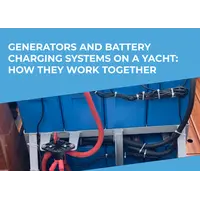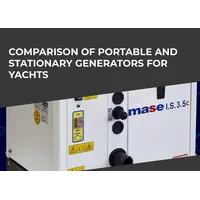Together with topRik experts, based on their practical experience, we figure out how to properly charge different types of boat batteries in low temperatures. At the same time, we will discover whether the ambient temperature affects the battery performance, what capacity battery is required at low temperatures, what charging system or battery charging scheme should be chosen, while also covering other issues related to the operation of marine batteries in cold conditions.
topRik marketplace offers a variety of battery charger models of any type, including multi-stage chargers, as well as models that perfectly cope with their tasks at any time of year and in any temperature conditions.
First, let's remember how a car starts. The ignition key connects a 12-volt battery to the starter for 3-5 seconds, which spins the crankshaft. At a certain speed, the engine starts, begins to work independently and drives the generator. The starter consumes a lot of energy, but it only spins for a few seconds and therefore almost does not discharge the battery. The generator replenishes this energy consumption in a few minutes, so in normal mode, car batteries are always charged and do not do any work.
Batteries on boats and sailboats work differently than car batteries. A yacht spends most of its time moored at the pier. Once a week or less, the owner starts the engine, leaves the harbor and then continues sailing. Except when the engine is running, all electrical equipment on the yacht is powered by the batteries. As a result, the batteries are discharged more than in a car, but because of the short run time of the generator, they are not charged as well.
On a boat or motor yacht, the engine runs longer than on a sailboat, so the battery operation mode resembles that of a car. But when the engine is turned off, the batteries also become the only source of energy.
On small vessels with a certain set of electrical equipment, there are two types of boat batteries according to their purpose - starting and service, or traction.
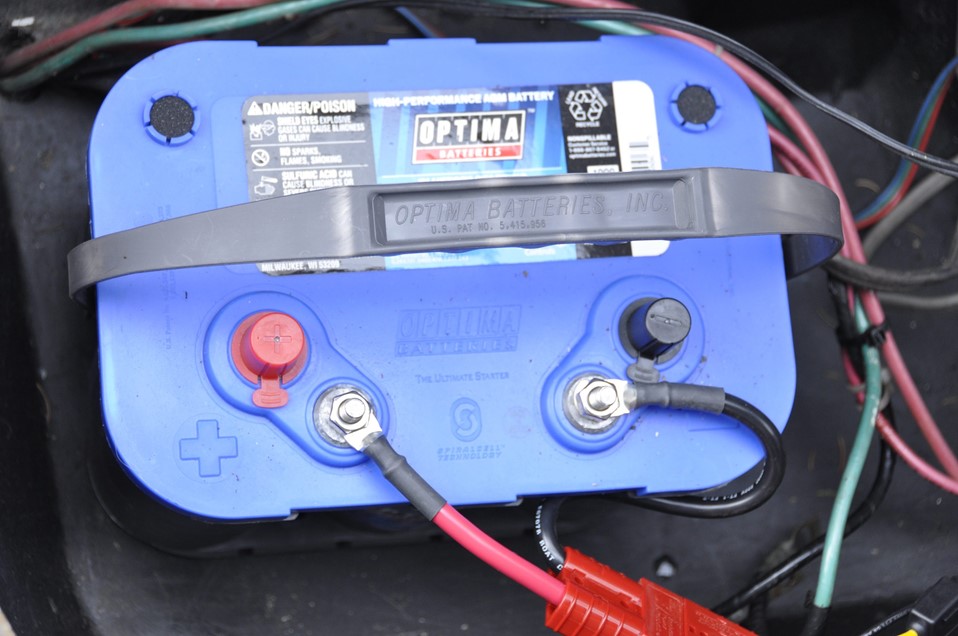
Starter Batteries
The starting current of boat engines reaches 1000 A. Current strength is the amount of charge that passes through the surface per unit of time. The faster the charge passes and the larger the surface area, the higher the current strength. The maximum current will be provided by a battery with a large contact area of the electrolyte and lead and a fast chemical reaction. Therefore, the battery case must have many thin plates with loose active material.
However, thin plates and loose active material do not withstand cyclic use - deep discharge and charging. With each cycle, part of the active material falls out of the grid of the battery plate and accumulates on the bottom of the hull. After some time, the "deposits" grow, short-circuit the plates, and the battery fails. This will happen if the starter battery is also used to power the yacht's electrical equipment.
When a starter battery is used for its intended purpose, it rarely discharges more than a few percent, and the amount of active mass that falls out is not large.
Service Batteries
In a boat's electrical system, service batteries act as a buffer between the power source - generator, charger or solar panels - and consumers (navigation equipment and household electrical appliances).
This means that the batteries are regularly deeply discharged and then recharged. To ensure that the plates of service batteries can withstand cyclic loads, they are made thicker than those of starter batteries, and dense active material is pressed into the strong grids, which is less likely to crumble during charging and discharging.
The cyclic use of boat batteries is irregular and differs from the operating mode of traction batteries, say, in forklifts, where the load is predictable and performed according to a schedule. Unlike them, traction batteries in boats often remain unused for long periods.
This does not matter much if the yacht is used in a region with a uniform climate, without sharp increases and decreases in temperature. But if the vessel is in a region where low temperatures are possible in winter, you should be aware of the problems that may arise related to charging batteries at low temperatures.

How to Choose a Yacht Battery Charger for Cold Climates
In the articles devoted to boat batteries, we described in detail the features of different types of batteries both by their purpose and by their chemical composition. Since the type of batteries in these categories is also important for the process of their charging, including in low temperature conditions, this parameter should be taken into account when choosing a charger for a boat battery.
Neither starter nor traction lead-acid batteries should be discharged 100%. Even expensive deep-cycle batteries will not last long in this mode. However, if the battery is not completely discharged, its capabilities are not fully utilized and, with a given current consumption, the battery capacity must be higher.
For example, if your daily power consumption is 100 Ah and you plan to discharge the battery to 50%, you will need a 200 Ah battery. Larger batteries last longer, but they are heavier, take up more space, and are more expensive. To maintain a balance between battery life and cost, it is recommended to discharge boat batteries to 50%, and in extreme cases, to 80% of their capacity.
Under load, the battery first gives off current from the surface of the plates. The starting battery is recharged immediately, and the inner sections of its plates do not have time to discharge. But with a partially discharged traction battery, the voltage across the thickness of the plates will equalize, the inner part of the plates will discharge, and charging the battery will take longer.
With a properly selected charger, traction batteries can be restored to 70-80% of their nominal capacity relatively quickly. However, in this state, only the outer part of the plates that is in contact with the electrolyte is fully charged, while the inner areas remain discharged. Further charging is very slow, the current consumption drops sharply, and it takes several additional hours to charge the battery to 100%. The thicker the plates and the denser the active mass material, the longer it takes to fully charge.
Since in practice traction boat batteries operate in one of three modes, the boat must have charging devices that support each of them, but it is easier and more convenient to use a multi-stage charger.
Cyclic use on water. Batteries are discharged to 50 percent or more, but not fully charged. This is how a service battery on a yacht or batteries for an electric boat motor work.
On water, it is important to charge the batteries quickly, so the charging current should be as high as possible. Each type of battery has its own safe charging current. For lead-acid batteries, it is 0.2-0.4C, for lithium batteries - 0.5-1C and higher. To prevent batteries from overheating during charging and from intensive gas emission, DC-DC chargers with temperature compensation or with current limitation are used. The charging speed increases by 5-10 times, compared to charging directly from the generator.
Mixed mode. The battery is supplied with a maintenance voltage, but is regularly discharged shallowly. The charger notices the discharge and switches on constantly to quickly recharge the batteries with a high current. In this mode, there is a risk that the device will overcharge the batteries as a result of frequent switching on. To prevent this from happening, the operating time of the charger should depend on how deeply the battery has been discharged.
The batteries are not connected to a load for several months and are in the maintenance charge mode. The condition of most liquid-acid batteries deteriorates quickly if the maintenance voltage is 13.8 V for a long time. It is recommended to reduce the voltage to 12.9 - 13.2 V or leave the batteries unconnected to the charger, recharging them regularly. If the ambient temperature is 20 degrees or lower, recharging is done at least once a month, at higher temperatures - more often.
Deep cycle lead acid batteries age in cold climates because the positive plate crumbles due to the expansion and contraction that occurs during charging and discharging. Brown sediment, sludge or dirt accumulates at the bottom of the battery case and causes the cells to short out.
In hot climates, additional causes of failure include positive plate enlargement, grid corrosion, plate swelling and water evaporation. Deep discharge, heating, vibration, overcharging and undercharging accelerate the aging process.
Unlike starter (starting) models, traction batteries are designed differently and operate on a different principle. Instead of short-term supply of high starting currents to the starter, they provide long-term current output for continuous power supply of electrical installations and mechanisms. Therefore, they are designed as described above to provide stable power supply to electrical equipment for several hours.
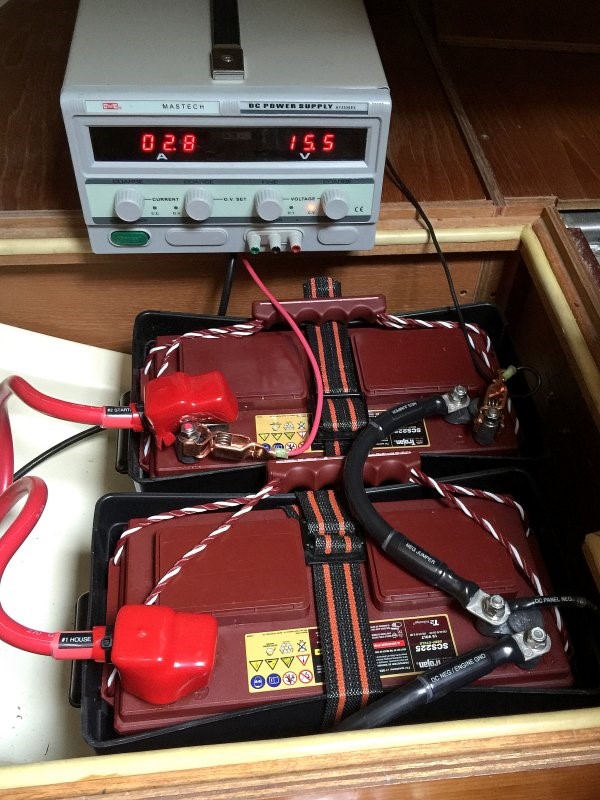
The most difficult to maintain are serviced lead-acid batteries with liquid electrolyte. A trained specialist is needed to maintain them, and a separate room with good ventilation that meets fire safety and sanitary and hygienic requirements is needed for charging. When charging such batteries, harmful and explosive gases are released, there is a risk of electrolyte splashing during transportation, and during operation, the electrolyte level must be systematically monitored and distilled water must be added if its level decreases.
When using such energy storage devices, it is important (in addition to the numerous other requirements for proper operation):
- charge the battery regularly and fully;
- do not leave the battery in a discharged state;
- conduct an equalizing charge weekly.
Lead-acid batteries with gel electrolyte are much easier to use. They are sealed, do not require complex maintenance, do not emit harmful fumes and can be charged in any room. During their entire service life, they do not require adding distilled water or other manipulations. Users are only required to monitor the battery's condition and charge it in a timely manner.
Lithium batteries are the most practical and efficient to use. Assembled from several identical cylindrical or prismatic batteries, they are completely sealed and do not require any specific maintenance. Each battery is necessarily supplied with a BMS board (Battery Management System), which monitors the voltage and does not allow it to go beyond the set limits. When the battery is fully charged, when the voltage reaches the set maximum, the BMS stops the charging process, and in case of critical discharge, it disconnects the battery from the load.
It works similarly in other dangerous conditions, such as overheating of the battery or an internal short circuit. To extend the service life of such energy storage devices, it is enough to follow simple recommendations, among which an important place is occupied by the conditions of charging and discharging:
- do not discharge to zero;
- do not keep it in a discharged state for a long time, otherwise irreversible loss of capacity or complete failure will occur;
- use suitable chargers - using the charging principle, corresponding to the specific battery in terms of voltage and charging current;
- charge at temperatures from +5 to +20 °C (ideally) or from +1 to +40 °C with currents from 1C to 5C;
- do not cover the battery or charger when charging;
- keep a cold battery (after being in the cold) at room temperature for a couple of hours before charging;
- maintain an optimal temperature regime – although the operating range of Li-ion batteries is from -20 to +50 °C, they demonstrate their best performance at +20 (±10) °C;
- store half charged at a temperature of 0 to +10 °C in a dry place, away from sources of fire and heat.
The most resistant to harsh operating conditions are traction batteries with the LiFePO4 chemistry type. Due to their stable structure, they are not afraid of frost, deep discharges, or high current loads. Such batteries are effectively used even in freezers.
The Importance of Choosing a Temperature Compensated Battery Charger
Almost all batteries are chemical current sources. Many chemical reactions depend on temperature. In general: the higher the ambient temperature and the substance, the faster the chemical reaction processes occur, and vice versa, the processes slow down at low temperatures. One of the most popular types of batteries - lead-acid - is a classic example of a chemical current source. The charge of such a battery is an electrochemical reaction, and, accordingly, depends on temperature. The hotter the battery, the lower the internal resistance of the battery becomes, and at low temperatures, the internal resistance of the battery, on the contrary, increases. Therefore, it is advisable to adjust the charging voltage depending on the temperature of the battery.
This voltage adjustment is called temperature compensation of charging, which allows you to be sure that the battery will not be undercharged or overcharged at the nominal charging voltage in conditions of temperature that deviates significantly from normal. At the same time, the charge itself will be carried out in a gentle mode for the battery, which will extend its service life and reduce maintenance costs.
First of all, when servicing batteries, you should be guided by the operating recommendations of battery manufacturers and passport documentation. Thus, the normal temperature range for charging lead-acid batteries is +20…+25°C, and in this case, temperature compensation of the charge is not required. However, in some cases, for example, in winter, if it is not possible to ensure the optimal temperature regime, the built-in function of temperature compensation of the charge is a must.
It usually operates automatically because it responds to a temperature sensor – a negative temperature coefficient (NTC) thermistor – which is connected to a special connector on the charger.
When the battery temperature deviates, the charging voltage changes with a certain temperature coefficient. As the temperature increases, the charging voltage decreases, and as the temperature decreases, the charging voltage increases proportionally to the product of the temperature difference, taking into account the temperature coefficient for a certain type of battery.
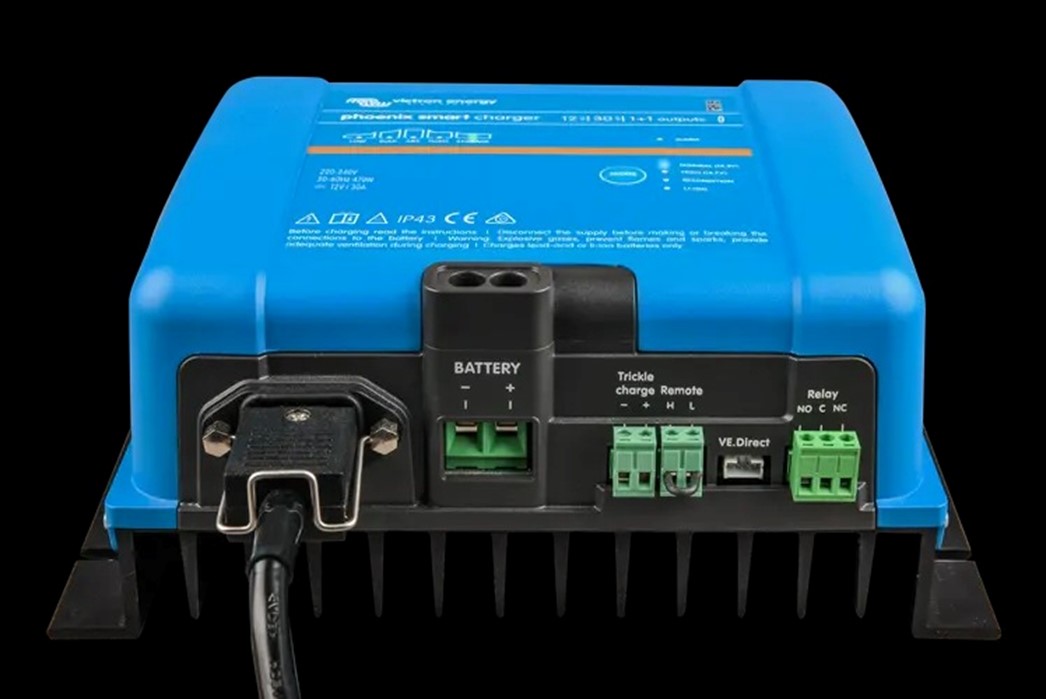
Features of Multi-Stage Chargers for Operation In Cold Conditions
topRik experts have the opportunity to see in practice the indispensability of universal chargers with the ability to multi-stage charge batteries of various types. For example, the universal charger Blue Smart IP22 Charger for charging all types of batteries with a voltage of 12 or 24 volts. It can charge all types of lead and lithium batteries Li-ion (LiFePO4). And the Phoenix multi-stage charger Smart is designed for charging not only traction batteries, but also starter batteries.
Most models of multi-stage chargers from Victron Energy, presented in the topRik marketplace , have several outputs for charging, which allows connecting several batteries. All outputs can provide full rated output current.
All models have a built-in automatic voltage compensation function, which means that even in low temperature conditions, the battery being charged will not be damaged. The smart charger compensates for the voltage drop in the DC cables, slightly increasing the output voltage as the DC current increases.
Adaptive 5-stage charging algorithm: charge – absorption – recovery – recharge – storage.
Phoenix Smart Charger is equipped with an adaptive control system that can be pre-configured to work with different types of batteries. The adaptive function automatically optimizes the charging process depending on how the battery is used. This also applies to the ambient temperature.
When only shallow discharges occur (e.g. a yacht connected to the shore), the absorption time is shortened to prevent overcharging of the battery. After a deep discharge, the absorption time is automatically increased to ensure that the battery is fully charged.
If a high charging current combined with a high absorption voltage is selected to fast charge the battery, the charger will prevent damage due to excessive gassing by automatically limiting the rate of voltage increase after the gassing voltage is reached.
Storage mode is activated whenever the battery has not been discharged for 24 hours. In storage mode, the float voltage is reduced to 2.2 V per cell (13.2 V for 12 V) to minimize gassing and corrosion of the positive plates. Once a week, the voltage is increased to the absorption level to "equalize" the battery. This feature prevents electrolyte stratification and sulfation , which are the main causes of early battery failure.
Charger Features That Help Protect Your Battery in Low Temperature Conditions
To sum up, let's clarify the parameters of chargers that you should pay attention to when choosing if you plan to use them in low temperature conditions.
- Ability to set the charging current. Although this seems like a natural feature, some chargers do not allow you to adjust the charging current. In order for a lead-acid battery to last as long as possible, a charging current of 10% of its nominal capacity is required. Charging with a lower current is not harmful to the battery, it will simply increase the charging time. And charging with a current greater than 10% will shorten its service life.
- Selecting a battery type. Most chargers on the market are designed for use with liquid-acid batteries. These models should never be used for gel or AGM batteries, since the final charging voltage is different for all battery types. Moreover, sealed maintenance-free AGM and gel batteries have a lower voltage than liquid-acid batteries, and charging with increased voltage will lead to irreversible boiling of the electrolyte and a significant reduction in their service life.
- Temperature compensation. During the charging process, any batteries heat up, and very rarely in the room where they are located, a stable temperature of about +20 degrees is maintained. During charging, the battery temperature can increase by 10 degrees, and the final charging voltage, taking into account temperature compensation, should be less. That is, for example, for AGM type not 14.3 V, but 14.0 V. The absence of temperature compensation in this case will lead to overcharging and a reduction in the service life of the battery. Therefore, a high-quality charger must have temperature compensation , preferably with a remote temperature sensor (for maximum measurement accuracy).
- Several stages of charging. For optimal charging of a lead-acid battery, it is necessary to use at least a 3-stage (or better yet, 5-stage) mode. The first stage involves charging with a constant current (the voltage increases), the second stage involves charging with a constant voltage (the current decreases), and the third stage involves maintaining the charged state with a reduced constant voltage (buffer mode with a minimum current compensating for the self-discharge current). If maintaining 100% charge is not required, a 2-stage mode is sufficient. Automatic chargers for gel and AGM batteries usually have 3-5 stages of charging.
- Correct voltage in buffer mode. Often there are chargers with incorrect voltage for buffer mode, most often 13.8 However, for example, for AGM batteries, the voltage in buffer mode is 13.3 V at a temperature of +25 degrees. Their round-the-clock operation with an incorrect voltage of 13.8 V leads to the fact that the service life is reduced by about 2 times due to the gradual boiling of the electrolyte. You can check for boiling with a medical stethoscope or simply by putting your ear to the battery. After about 48 hours in buffer mode, gas emission should stop almost completely.
- Operating temperature range. Most household models have a temperature range of +5...+40 degrees. A wider range usually indicates that professional use is implied, which in turn indirectly indicates high quality. In addition, if you plan to charge batteries in an unheated room, you need to choose a model with a wide temperature range.
Based on the above-mentioned properties and characteristics of batteries of different types by design and chemistry, you can choose a model of charger that will exactly match the battery type and charge it normally at low temperatures .
How to Properly Charge Batteries at Low Temperatures
At low ambient temperatures, batteries do not accept charge. A discharged battery can only be recharged after preliminary warming up in a warm room. Below are some simple tips on preparing batteries for charging in cold weather (warming up, insulation).
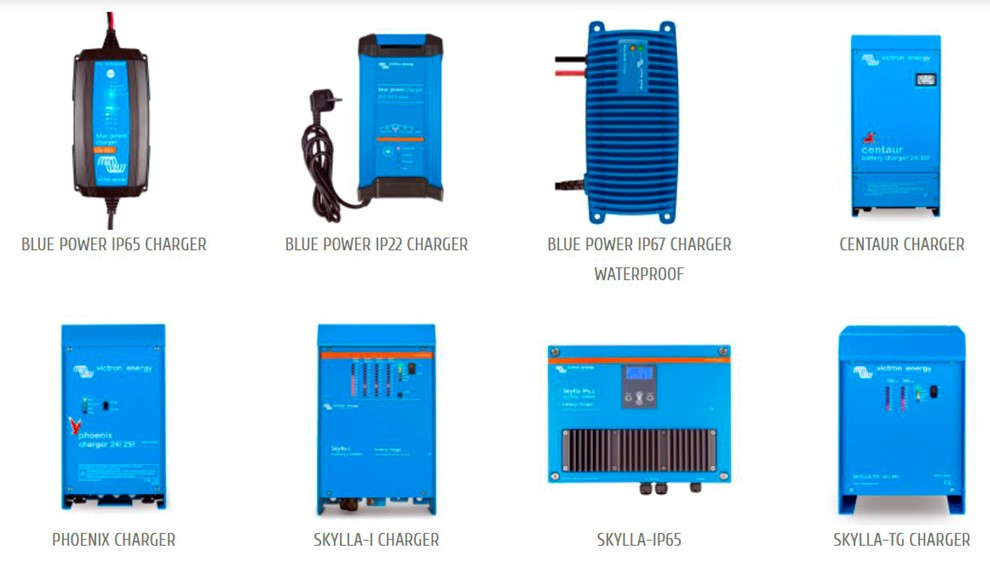
Optimal Charging Strategy in Cold Conditions: Slow and Steady Process.
When the temperature drops to 0°, the battery charge may decrease by up to 30%. To avoid discharging, store the batteries fully charged.
Even at -30 degrees Celsius, the battery accepts a charge, at least a little. And if time is not particularly limited, you can connect the battery to the charger and wait patiently. With a 10- or even 20-fold decrease in the charging current, the charging time will increase similarly. But if there are no other options, you will have to put up with it.
If there is an urgent (!) need to speed up the process, the battery can be brought indoors and placed in a cuvette with warm (but not hot!) water, making sure that the water does not touch the terminals, and wait until the battery warms up not only from the outside, but also from the inside. Then the battery will charge a little faster than in the first case.
Tips for Preparing Batteries for Charging
Use a SMART charger - it keeps the battery constantly charged. Self-discharge can be observed in any battery, so if you do not use a "smart" charger when parked, be sure to disconnect the negative wire from the battery (or disconnect the "ground").
Remember about the drain pump connected in automatic mode, they are often connected bypassing the ground switch.
At low temperatures, chemical processes in the battery slow down, and before starting the engine, it is necessary to "warm up" the battery, for example by turning on headlight finder or radio for a few minutes.
Before starting, bleed the fuel system so that you don't have to turn the starter too much. Start the starter in short cycles of up to 10 seconds with breaks of about a minute.
How to Avoid Overheating and Overcharging Batteries in the Cold
The permissible temperature range for charging the battery is from -15 to 40 °C. If recharging occurs in frost, the voltage should be higher so that the battery warms up faster. And to avoid overheating and overcharging of batteries in the cold, the compensation value should be 0.03 V / degree. However, you cannot set the charging voltage above the maximum values, otherwise the battery may fail.
Storing Batteries in Winter: Maintaining Charge
Much depends on whether the yacht will spend the winter in a closed hangar or in the open air. In any case, it is necessary to remove electrolyte leaks, oxidation of pole terminals and clean the hull surfaces from dust with a conductive layer.
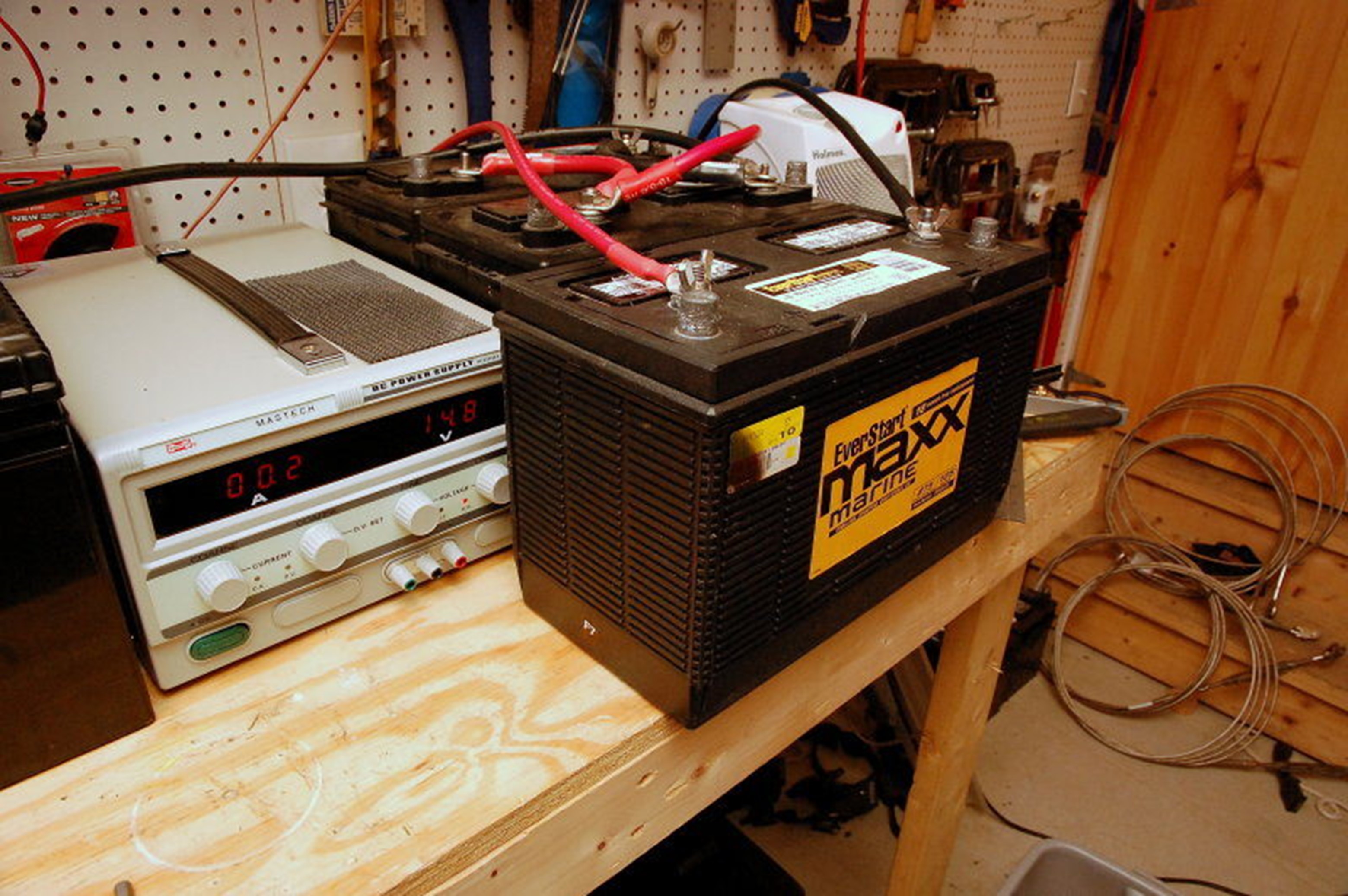
How to Prepare Batteries for Winter Storage on a Yacht
If the yacht is to spend the winter outdoors, the owner will have to dismantle the batteries - an operation that must be carried out before sending the yacht (boat or motorboat) into winter storage.
After removal, the batteries should be placed in a dry and warm room. If they are alkaline, it is better to discharge them, and if they are acidic, charge them to the limit.
If the yacht is stored in a hangar, the batteries do not need to be removed. Preparing the batteries for winter storage on the yacht includes monitoring their condition, which is easier to do using a charger with a Float mode.
Using Float Modes in Winter
After the battery is fully charged, the charger reduces the voltage and switches to maintenance charging, which compensates for the battery's self-discharge. During long-term storage, the maintenance voltage should not differ from that recommended by the battery manufacturer.
High maintenance voltage accelerates corrosion of positive plates and leads to rapid aging of the battery. In a 12-volt battery, corrosion doubles with an increase in voltage by 0.6 V. Too low a voltage, on the contrary, does not allow the battery to remain charged, and sulfation develops in its plates.
The maintenance voltage varies from battery to battery. For 12-volt batteries with liquid electrolyte, it is 12.9-13.9 V. However, such batteries should not be left under voltage for several months. Perhaps the best storage option for them is periodic recharging at least once a month. There are no such restrictions for gel and AGM batteries.
The Dangers of Charging in the Cold and How to Avoid Them
There are significant risks for different types of batteries when they are charged incorrectly in low temperatures. We have mentioned some of them above, we will add a list of possible damage to batteries when charging in cold weather.
Risks of Electrolyte Freezing in Lead-Acid Batteries
Increased viscosity of the electrolyte. In gel-like electrolyte, the viscosity may increase in severe frost, which makes ion exchange difficult. Solution: avoid using and charging the battery in extreme cold conditions.
Risk of electrolyte freezing at very low temperatures. Although gel batteries are more resistant to freezing than wet batteries, there is still a risk at extremely low temperatures. Solution: ensure the highest possible ambient temperature, avoiding prolonged exposure to severe frost.
Possible Damage to Batteries Due to Improper Charging in Low Temperature Conditions
Reduced battery capacity in cold weather. Cold weather can reduce the battery's ability to deliver a charge. Solution: store the battery in a relatively warm place before use, or warm it up before starting the device.
Difficulty charging the battery. In cold temperatures, the battery may charge more slowly or not fully. Solution: charge the battery in temperatures above 0°C, ideally in a room with room temperature.
Accelerated wear due to frequent use in cold weather. Regular use in cold temperatures can accelerate the aging of the battery. Solution: try to keep the battery charged and avoid completely discharging it, especially in cold weather.



